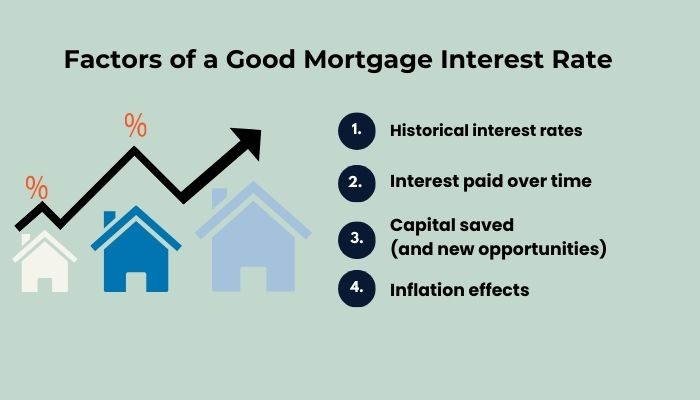Investing in a property requires capital.
If you don’t have much material wealth, that presents a dilemma. If you have material wealth but it’s tied up in illiquid assets, you’ll face a similar dilemma. You’ll need a way to raise the capital necessary to fund your purchase.
Mortgages, or home loans, seek to resolve this problem. A bank lends you the money you need, and in exchange, you’ll be required to pay it back, typically over the course of 15 or 30 years.
Naturally, you’ll pay interest on this loan; it’s how lenders make money.
But how much interest should you expect to pay? And how much of an impact should this have on your buying decision?
Contents
The Importance of Considering Interest Rates
Interest rates vary.
Right now, you can shop around with different lenders and find very different rates for similar loans. You may also find different interest rates based on your credit score, loan terms, and other factors. And of course, you’ve probably noticed that mortgage rates broadly increase and decrease over time.
Your timing, your personal finances, and your lender selection all play a role in determining your mortgage interest rates.
So why do they matter to you?
- Monthly payments. Interest rates factor into your monthly mortgage payments. Your mortgage payment typically includes payment toward both the principal and interest of your loan, as well as property taxes and insurance if you’re in escrow. Accordingly, the higher your interest rate is, with all other factors being equal, the larger your monthly payment will be. The higher your mortgage payments are, the more you’ll need to charge for rent to be profitable – and the less profit you’ll make.
- Interest paid over time. Interest is a cost you pay for getting access to capital early. Interest can compound in different ways, but it typically compounds semi-annually for fixed rate mortgages. Even relatively low interest rates can add up to significant amounts of interest with enough time. Over 30 years, a six-figure loan will typically cost you six figures (or more) in interest payments. Reducing your interest rate by fractions of a percent can ultimately save you five or six figures in interest costs over three decades.
- Buying power and available capital. Suppose you have $1 million in stock holdings and you want to buy a $500,000 property. You could cash in half your stocks and pay for the property outright, avoiding interest altogether. But assume that you can get a mortgage for the full amount at a 6 percent, annual fixed interest rate. Also assume that you can make 8 percent annually from your stocks. In this scenario, you’ll pay 6 percent interest on the $500,000 you borrowed, but you’ll also make 8 percent interest on the $500,000 you saved yourself, ultimately netting a profit. You can also choose to invest that $500,000 in another property, if you so desire. In other words, if your interest rate is low enough, you can preserve your capital, increase your total buying power, and ultimately put yourself in a much better position.
- Other benefits. Inflation reduces the real value of debt, as it reduces the buying power of the dollar. As inflation erodes the value of our currency, the functional value of the debt you hold will decrease. If you’re paying 25 percent interest or more on debt accumulated through credit cards, the minimal rate of inflation probably won’t benefit you much. But if you have a 4 or 5 percent interest mortgage in place, the equation looks much more favorable. The lower your interest rate is, the higher your marginal benefits from inflation will be.
- Effects on market dynamics. In most ways, lower mortgage interest rates are superior. However, there is a potential drawback. Because low mortgage interest rates are so favorable and so attractive, they tend to artificially increase demand. In 2020 and 2021, when interest rates were obscenely low, there was a rush to buy property that had the downstream effect of skyrocketing prices and much greater competition among buyers. Existing property owners can benefit from this effect, but it can make it more expensive and difficult to acquire certain properties.
Different Types of Mortgages (and Rates for Each)
The interest rate you can obtain typically depends on a number of factors, including:
- Type of mortgage. There are many types of mortgages available. Some are geared toward home buyers intending to purchase a primary residence, while others are meant for investors. Some offer a fixed rate, while others offer a variable rate, though fixed rates are typically the better move even when interest rates are higher. And of course, there are ways you can qualify for special mortgages that may offer even more attractive interest rates. Still, most types of mortgages stay within a few interest points of each other.
- Loan term. A 30-year mortgage typically has a lower interest rate than a 15-year mortgage, but keep in mind that when you pay off the loan faster, you’ll pay less interest overall.
- Credit score. Your credit score has a direct and significant impact on the mortgage interest rates available to you. The better your score, the lower your rates will be.
- Paying for points. Some lenders offer homebuyers the option of spending additional money upfront in exchange for a lower interest rate. The dynamics and benefits of this depend heavily on the exact factors in play; you can probably crunch the numbers yourself to determine whether it’s worth it. Think about how much money you’ll save in the long term compared to how much you need to pay now.
How the Economy Affects Interest Rates
What actually determines baseline interest rates?
There are many factors in play, but the most important and obvious one is the target federal funds rate, set by the Federal Reserve. Essentially, the Federal Reserve controls the monetary policy of the United States, and it lends money to member banks, which then lend money to other banks in the system. Because the Federal Reserve controls the interest that member banks pay on the loans they borrow from the Fed, banks downstream of this interaction are practically forced to adjust their interest rates in response.
In other words, when the Fed increases interest rates, most banks increase their mortgage rates. When the Fed decreases interest rates, most banks decrease their mortgage rates.
Historical Mortgage Interest Rates in NW Arkansas
Mortgage rates have been all over the place throughout the past 40 years. The interest rate for an average, 30-year, fixed-rate mortgage has been as high as nearly 20 percent (in the early 1980s) and as low as nearly 2.5 percent (in 2021). It’s much more “normal” for the mortgage interest rate to hover around 6 or 7 percent.
If you see a mortgage interest rate lower than 6 percent, you can consider it “good” from a historical perspective. But what about from a practical perspective?
What Is a Good Mortgage Interest Rate for Buying Property in NW Arkansas?
It’s hard to say what a good mortgage interest rate is from a general perspective, because home buyers enter the market with different goals in mind. Some buyers want a low interest rate so they can pay less money to the bank over time, while others are more interested in keeping their monthly payments low, and still others are looking to capitalize on the money they save with other investments.
Still, that most people can determine whether a mortgage interest rate is good by looking at the following:

- Historical interest rates. Arguably the best indicator for whether an interest rate is good is historical comparison. If this is the lowest interest rate you’ve ever seen, or if it’s relatively low from a historical perspective, you should feel more compelled to move forward with your purchase.
- Interest paid over time. You may also want to look at the interest you’re going to pay over the duration of your mortgage. Nobody likes to send money to the bank for free, and the lower your interest rate is, the less you’ll need to do it.
- Capital saved (and new opportunities). Think about how much capital you’re going to save by taking out a loan and the opportunities you’ll have with that capital in hand. How much interest or revenue will you be able to generate with this capital, and how does that compare to the interest you’ll pay on the loan? If an interest rate is low enough to practically guarantee comparable profitability in another investment, it’s a good interest rate.
- Inflation effects. Finally, think about the effects of inflation. Inflation often hovers between 1 and 2 percent annually, with significant jumps on occasion, and you can expect the real value of your loan to decrease by a similar amount each year. This can mitigate some of the interest you pay on your loan, making exceptionally low interest rates even more attractive. In times of relatively high inflation, you can usually afford to take a somewhat higher interest rate – which is ironic, because low interest rates often function as drivers of inflation, potentially allowing you to capitalize on the best of both worlds.
Timing a property purchase can be difficult, especially when you have hundreds of financial variables to keep in mind.
That’s why it’s important to work with real estate experts, including real estate agents and investors with years of experience under their belts.
You can begin your home buying journey or start the next phase of your property investment plan with an expert consultation designed to clarify your goals and set you on the right track.
When you’re ready to get started, contact us!
- Why Consider Off Market Real Estate in NW Arkansas? - January 30, 2025
- What Is a Good Mortgage Interest Rate for Buying Property in NW Arkansas? - January 16, 2025
- Is Staging Your NW Arkansas Home Worth It? - December 18, 2024

